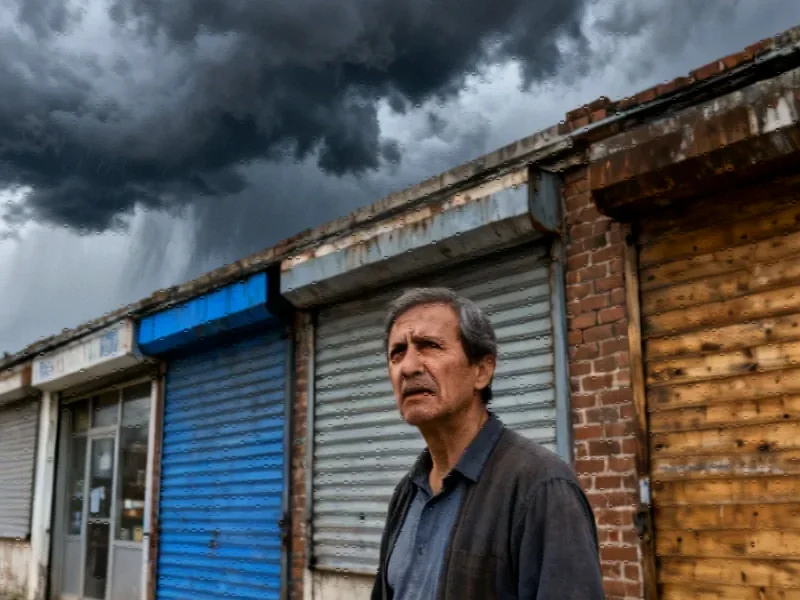Strategic Importance of the Thawing Arctic
Canada is taking significant measures to protect its interests in the rapidly changing Arctic region as the fabled Northwest Passage becomes increasingly navigable due to climate change. According to reports, the passage that once claimed the lives of 19th-century explorers now welcomes thousands of tourists annually aboard cruise ships, with nine vessels expected to dock this year alone at Gjoa Haven, an Inuit community central to the region’s history.
The opening of the Northwest Passage for several months each year represents one of the most significant geopolitical consequences of Arctic warming, analysts suggest. The Canadian government asserts sovereignty over these waters, while the United States and several other nations consider it an international waterway, setting the stage for potential conflict.
Global Competition Intensifies
Sources indicate the warming Arctic has ignited a superpower rivalry reminiscent of the Cold War era. Russia is reportedly strengthening its military positions in the region, sometimes cooperating with China, which describes itself as a “near-Arctic state” and is expanding both commercial and scientific activities. Meanwhile, former President Trump’s administration had previously made statements about potential territorial ambitions toward Canadian and Greenlandic territory.
Canada is responding with its largest military spending increase since World War II, according to government announcements. The report states that Prime Minister Mark Carney has promised substantial infrastructure projects to reinforce Canada’s position in Northern Canada, though some experts question whether these measures will be sufficient against larger global powers.
Inuit Knowledge as Sovereignty Foundation
The Canadian government’s legal claim to the region relies heavily on the continuous presence of Inuit peoples, according to official statements. The concept of “historic title, founded in part on the presence of Inuit and other Indigenous peoples since time immemorial” forms the basis of Canada’s sovereignty position in the Arctic.
Perhaps nowhere is this connection more evident than in Gjoa Haven, a hamlet whose residents recently helped solve one of the Arctic’s greatest mysteries. After decades of failed attempts by external explorers, local Inuit knowledge led to the discovery of Sir John Franklin’s two long-lost ships in 2014 and 2016.
Oral History Solves Centuries-Old Mystery
The story of the Franklin expedition’s tragic end in 1848 had been preserved in Gjoa Haven’s oral traditions for generations, though many elders initially refused to share information with outsiders due to historical distrust of the Canadian government. According to reports, keeper of oral history Joanne Hummahuk passed knowledge of the expedition’s possible location to younger generations while forbidding disclosure to non-Inuit.
The breakthrough came when Hummahuk’s great-grandson, Louie Kamookak, began systematically documenting Inuit oral histories with his wife Josephine. Their work eventually contributed to the Canadian government’s 2008 search effort, which explicitly incorporated Inuit knowledge after previous attempts had failed. The search initiative marked a significant shift in approach, acknowledging that “local Inuit involvement has been absent in previous searches.”
The Erebus was located in 2014 exactly where Kamookak’s great-grandmother had indicated, near an islet traditionally called “Umiaqtalik” or “There is a boat there.” Two years later, the Terror was found after Gjoa Haven resident Sammy Kogvik shared his own sighting of a mast protruding from ice years earlier.
Infrastructure Deficits and Sovereignty Concerns
Despite Canada’s reliance on Inuit presence to support its sovereignty claims, the region suffers from significant infrastructure gaps that could undermine its position. Tony Akoak, who represents Gjoa Haven in Nunavut’s legislature, noted that like most Inuit communities, the hamlet lacks paved roads and adequate housing while depending on annual diesel shipments for power.
Akoak suggested that building larger airports, deeper ports, and more docks would simultaneously boost economic development, enhance military capacity, and help protect Canadian interests against foreign designs on the Northwest Passage. These industry developments in remote infrastructure could prove crucial for regional security.
Environmental Transformation Accelerates
The physical landscape of the Arctic is changing rapidly, with the Northwest Passage now experiencing three to four ice-free months annually—twice as long as just decades ago. Winter ice has become thinner and less likely to form the dangerous pack ice that historically threatened ships.
These environmental shifts are bringing unexpected ecological changes, including grizzly bears venturing north into traditional polar bear territory and shrubs growing taller across the tundra. Some residents speculate that palm trees might eventually thrive in the region as warming continues, according to local accounts.
Balancing Tradition and Modern Sovereignty Challenges
The people of Gjoa Haven find themselves at the intersection of ancient traditions and modern geopolitical struggles. While the community has embraced some economic opportunities from increased tourism, concerns persist about foreign encroachment and the Canadian government’s ability to protect the region.
Raymond Quqshuun, Gjoa Haven’s mayor, captured this sentiment when he recalled his reaction to statements about potential annexation: “We have our own country here, and we want to keep it that way.” Yet he expressed uncertainty about whether Canada can effectively deter larger rivals, noting that protection of sovereignty often falls to “us people up here”—the Inuit residents of the Arctic.
As climate change continues to reshape the North, Canada’s approach to Arctic foreign policy will need to balance military investment with genuine partnership with Inuit communities whose knowledge and presence form the foundation of the nation’s sovereignty claim. Organizations like the Arctic Research Foundation continue to play important roles in understanding these complex dynamics amid ongoing related innovations in polar research. The recent recognition of Inuit contributions to Arctic understanding, including honors bestowed on community members, highlights the growing appreciation for traditional knowledge in addressing contemporary challenges.
This article aggregates information from publicly available sources. All trademarks and copyrights belong to their respective owners.
Note: Featured image is for illustrative purposes only and does not represent any specific product, service, or entity mentioned in this article.



